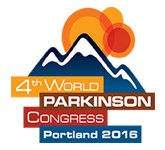Why there is no PD cureThe most eye-opening factoid I took away from the 2013 World Parkinson Congress (WPC) is that almost one-third of all clinical trials fail to enroll enough participants to get off the ground. This leaves patients wondering which, if any of these trials, might have led to the cure for Parkinson’s disease. Researchers can come up with one highly promising idea after another, and even raise the necessary funds, but unless enough patients show up to participate, they can’t move off the starting block. Recognizing the collaborative nature of clinical trials, the WPC brought together the various stakeholders (Movement Disorder Specialists, Study Coordinators, and people with Parkinson’s, etc.) to learn about each others’ roles in the clinical trial process, and to share their thoughts about, “Why we still have no cure for Parkinson’s, and what we can do about it.” Discussions revealed that patients whose PD symptoms are well-controlled are understandably reluctant to join a clinical trial that would have them alter their treatment plan.
|
What they don’t realize is that many trials don’t involve taking any additional medication. Participants may simply be asked to complete family medical history surveys or commit to a specific exercise regimen. Besides too few participants, the group also identified the following obstacles that may be slowing the search for the cure:
If we, as patients, want to see a cure for Parkinson’s disease in our lifetimes, we need to become more aware of and engaged in the clinical trial process. Until that happens, we are our own worst enemy.
| |
email us directly at: Sheryl@pdplan4life.com (c) 2015 PDPlan LLC All Rights Reserved Without express written consent, this material may only be used for your own personal and noncommercial uses which do not harm the reputation of PDPlan LLC, provided that you do not remove any copyright. To request permission to reproduce, please contact PDPlan LLC at Sheryl@pdplan4life.com |
 |
 |




